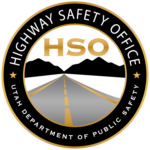School Bus Safety
The Safest Way To Get To School
According to the National Highway Traffic Administration (NHTSA), school buses are the safest way for children to travel to and from school. School buses are built to be safer than passenger vehicles in avoiding crashes and preventing injuries.
- Failing to stop for a school bus with flashing red lights is a serious offense.
- The fines for a first offense start at $1,000, and repeat offenses can lead to even higher fines and mandatory community service.

🚌 School Bus Safety: Driving Around School Buses
School buses are the safest way for children to travel to and from school. It is crucial for drivers to know and follow the laws governing driving around them.
🚗 Driver Responsibilities: Slow Down and Drive Alert
-
Slow Down: Always reduce your speed when you see a school bus.
-
Watch for Children: Children can be unpredictable and may rush from unexpected directions, especially when running late.
🚦 School Bus Lights and What They Mean
Know the difference between the yellow (amber) and red flashing lights, and what action you must take.
| 🚦Signal | 🚨Meaning | 🚗Driver Action |
| Yellow Flashing Lights (Amber) | The bus is preparing to stop, load, or unload children. |
Drivers may pass using care and caution at a speed not exceeding 20 MPH.
|
| Red Flashing Lights and Extended Stop Arms | The bus has stopped and children are getting on or off. Remember, they may be crossing the street in front of the bus. |
Drivers MUST STOP and WAIT until the red lights stop flashing, the stop arms are withdrawn, and the bus begins moving again.
|
🛑 When You MUST Stop for a School Bus *Flashing Red*
Whenever the red lights are flashing, a motorist MUST STOP under the following circumstances:
-
When approaching a school bus, either from the front or rear, on a road with fewer than 5 lanes (including the center turn lane).
-
Be aware that the bus driver is required to use the flashing red lights whenever children are loading or unloading and need to cross the highway.
-
Note: The bus headlights must be on at all times when the bus is on the road.
✅ When You Are NOT Required to Stop
Motorists approaching from the opposite direction are NOT required to stop under these specific circumstances:
-
When there is a physical barrier or median dividing traffic.
-
When there are five or more lanes, which includes the center turn lane.
-
You may also proceed if the bus is at an intersection with a traffic light or police officer.
⚠️ Know the Penalties for Illegally Passing a School Bus
Failing to stop for a school bus with flashing red lights is a serious offense under Utah law (Utah Code 41-6a-1302).
-
First-Time Offense: A fine of $1,000 and 10 hours of community service.
-
Repeat Offenses: Penalties increase with each offense, potentially resulting in even higher fines and mandatory community service.
🛡️Why Don't School Buses Have Seat Belts?
School buses use a different, highly effective safety restraint system called Compartmentalization.
-
The Concept: NHTSA determined that Compartmentalization is the best way to provide crash protection to passengers of large school buses.
-
How it Works: It creates a protective envelope of strong, closely spaced seats with energy-absorbing seat backs.
-
Analogy: You can compare this safety concept to an egg carton, where each seat compartment protects the child within it.
-
Additional Safety: Large school buses are heavier and distribute crash forces differently than passenger vehicles, thereby lessening the forces occupants experience.

For more information
Utah's Occupant Protection Program
Amy Winkler
385-296-8809
[email protected]
